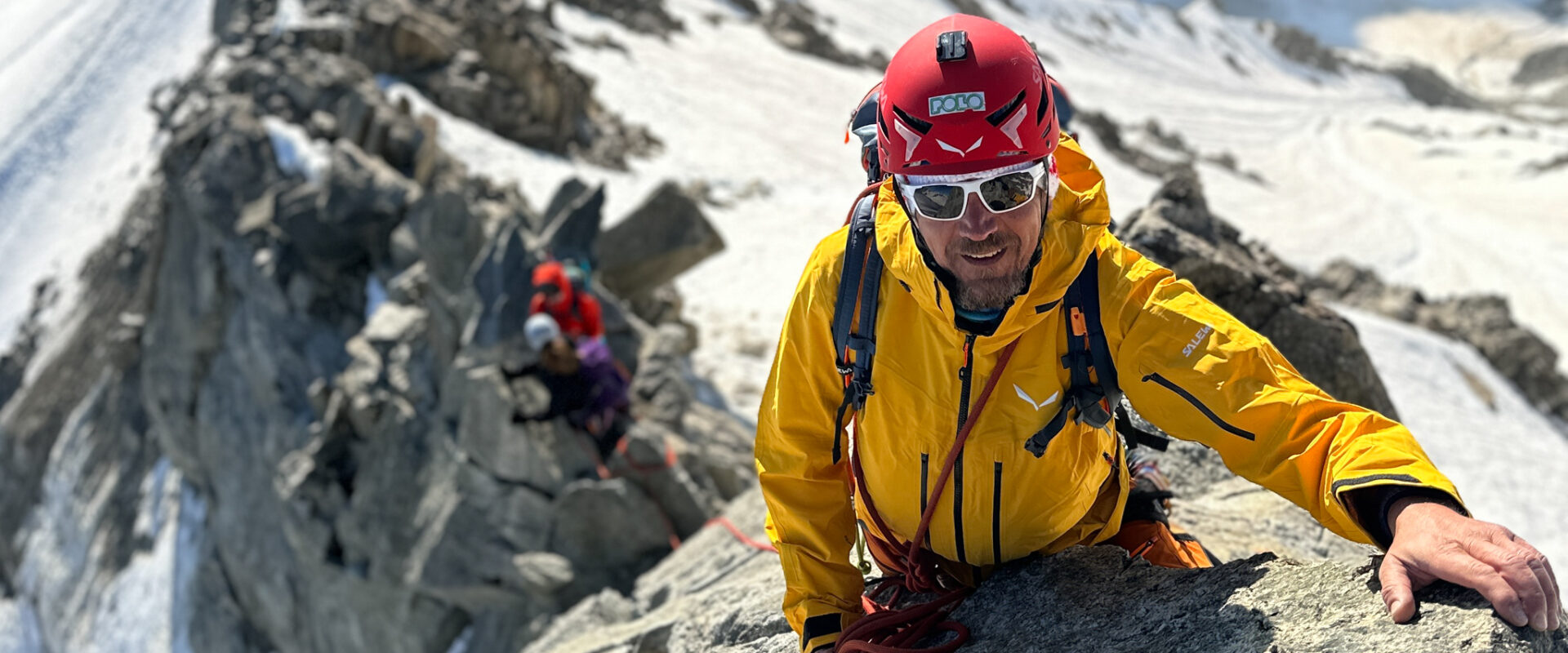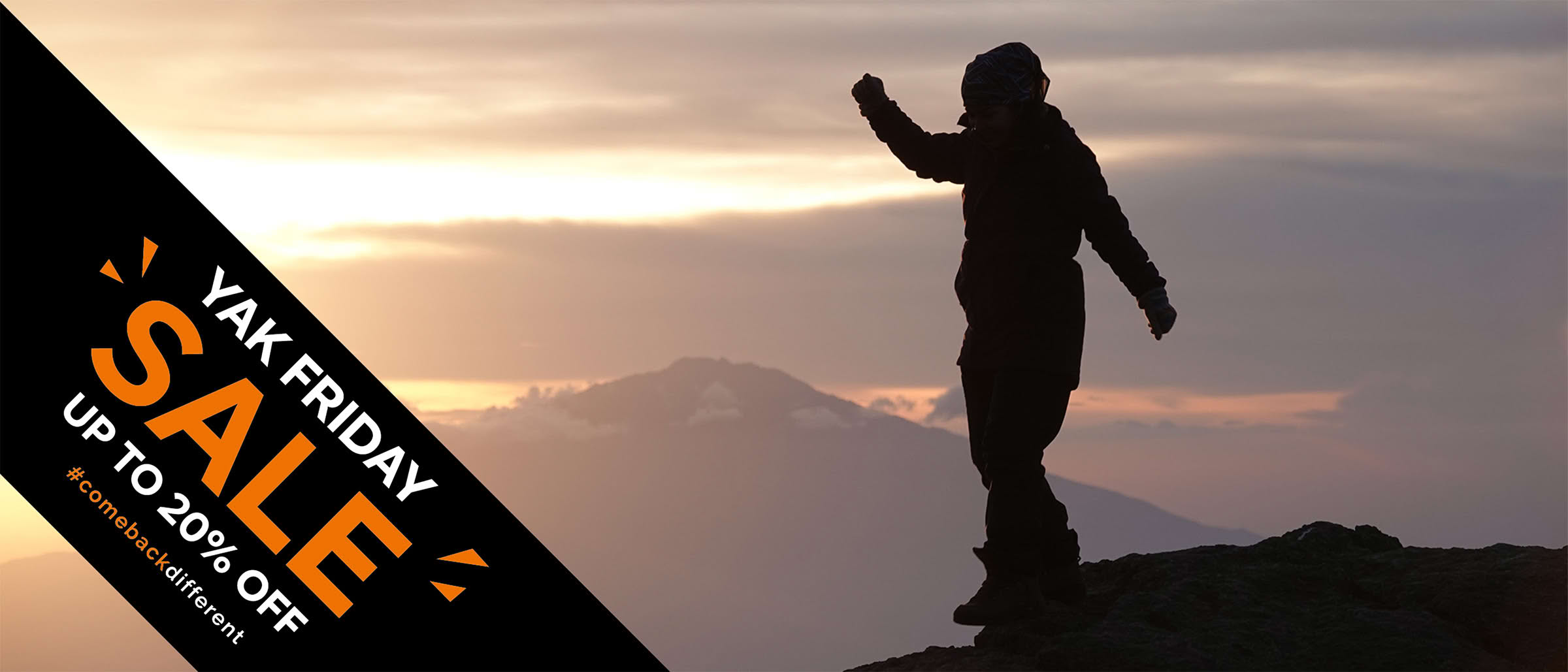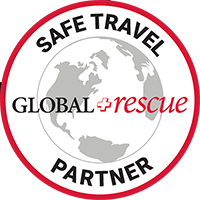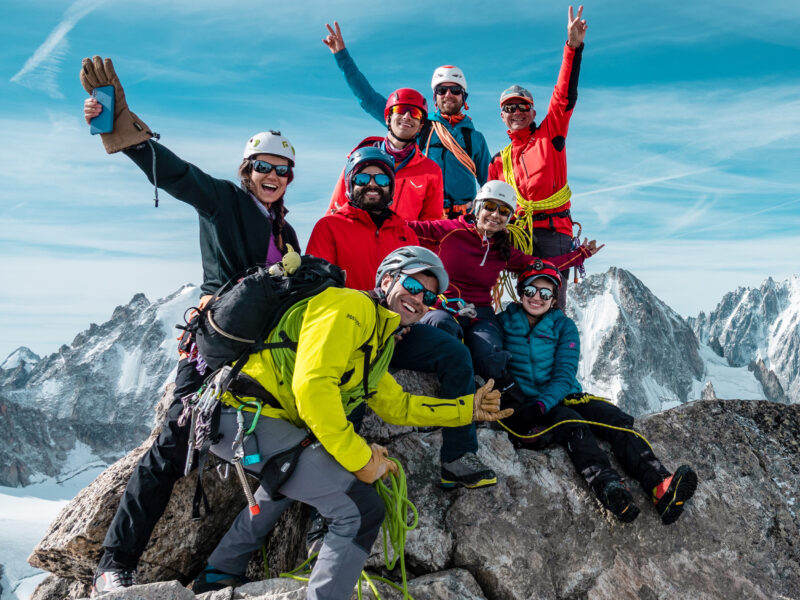BY Rami Rasamny | February 19 2025
Is Mont Blanc a Technical Summit?

Mont Blanc is one of the most iconic peaks in the world, attracting thousands of climbers each year. For those taking on the Gouter Route, the Italian Normal Route, or the Three Summits Route, Mont Blanc is not considered a highly technical summit. However, these classic routes still require essential mountaineering skills and experience with alpine terrain.
Techniques Needed to Climb Mont Blanc
While Mont Blanc climbing does not involve advanced technical rock or ice climbing, it does require proficiency in fundamental mountaineering techniques. These include:
Walking with Crampons on Varied Terrain
Crampons are essential for climbing Mont Blanc. Climbers must be comfortable walking with crampons on snow, ice, and mixed terrain. Mastering flat-foot techniques (all points of the crampon in contact) improves stability and efficiency.
Using a Single Mountaineering Ice Axe
A single mountaineering ice axe is used for balance and support on steep sections of the climb. It is also crucial for self-arrest in case of a slip. Knowing how to hold and use the axe properly ensures safety on Mont Blanc’s exposed slopes.
Wearing a Mountaineering Harness
A mountaineering harness is necessary for roped sections, particularly on glaciers and exposed ridges. Climbers must know how to put on and adjust their harness correctly to stay secure during their Mont Blanc ascent.
Tying a Figure of Eight Knot
Basic ropework is part of any Mont Blanc guided climb. The figure of eight knot is commonly used for attaching the rope to a harness. Understanding how to tie and check this knot ensures proper security on the climb.
Walking in a Rope Party
On glaciated terrain and exposed sections, climbers are often roped together for safety. Walking in a rope party requires maintaining the correct distance, adjusting pace based on terrain, and responding quickly to the guide’s instructions. Proper rope management helps prevent falls and improves group efficiency.
Descending Angled Slopes Facing Away from the Mountain
Efficient and controlled descent is key to safely summiting Mont Blanc. On moderate slopes, climbers descend facing away from the mountain using proper crampon technique. On steeper sections, they may need to turn and face inwards for extra control.
Using Crampons on Ice-Covered Rocks
Mont Blanc routes often include sections where climbers must step on ice-covered rocks. Proper foot placement and weight distribution while using crampons are critical to prevent slipping and maintain balance on these sections.
Responding Well to the Guide’s Instructions
For those on a Mont Blanc guided climb, following the guide’s instructions precisely is essential. Guides manage pacing, route selection, and safety precautions to ensure a successful Mont Blanc summit hike.
Final Thoughts
While Mont Blanc’s classic routes are not highly technical, they demand solid mountaineering fundamentals, fitness, and the ability to move efficiently in alpine conditions. Climbing Mont Blanc requires preparation, proper gear use, and the ability to handle varied terrain confidently. Understanding these techniques will significantly improve your chances of safely and successfully reaching the Mont Blanc summit.
About The Author
Rami Rasamny is the founder of Life Happens Outdoors, a premium adventure travel community dedicated to transforming lives through curated outdoor experiences. A mountaineer and entrepreneur, Rami has led teams on some of the world’s most challenging peaks, from the Alps to the Himalayas. His mission is to make adventure accessible, transformative, and safe for all who seek to push their limits and Come Back Different.
About Life Happens Outdoors
At Life Happens Outdoors, we believe in the power of nature to transform lives. As proud members of the Adventure Travel Trade Association (ATTA) and the World Travel & Tourism Council (WTTC), our team of certified guides and outdoor professionals is committed to the highest standards of safety, sustainability, and excellence.
Discover more about our story and mission on our Meet LHO page, or explore our curated adventures such as the Tour du Mont Blanc Trek, the Climb of Kilimanjaro, and Chasing the Northern Lights.















